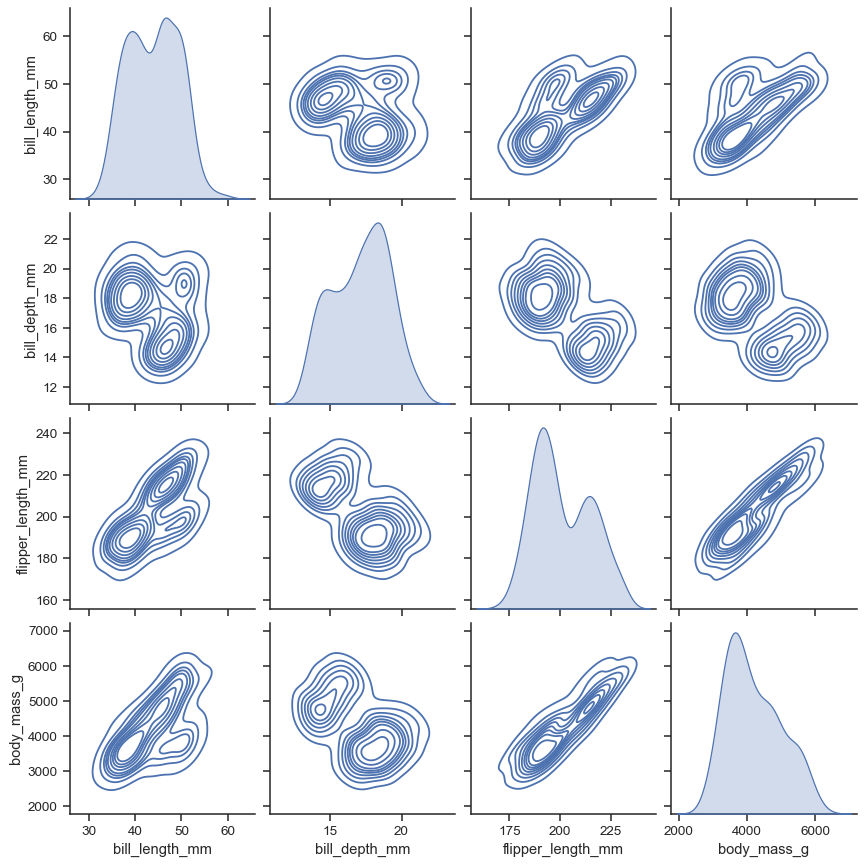There are two main downsides to a contour plot I can see:
- Where there is no strong distinction and the failed and successful runs overlap quite a bit, the plot becomes very confusing.
- Unlike in a single contour plot, the pairwise() function does not allow the user to set the parameter
levels, so lines can become very confusing. In simple testing with a single contour, I found that 4 levels is a nice balance, but 3–5 will probably be ok too.









Seaborn 0.11.0 (September 2020) added functionality to the
sns.pairplot()function for kde (contours) and histograms (discretized heatmap). It would be great for EMA to add this functionality, especially since the contour plot would better show the distributions within PRIM results compared to the current scatter plot approach.e.g. from https://seaborn.pydata.org/generated/seaborn.pairplot.html